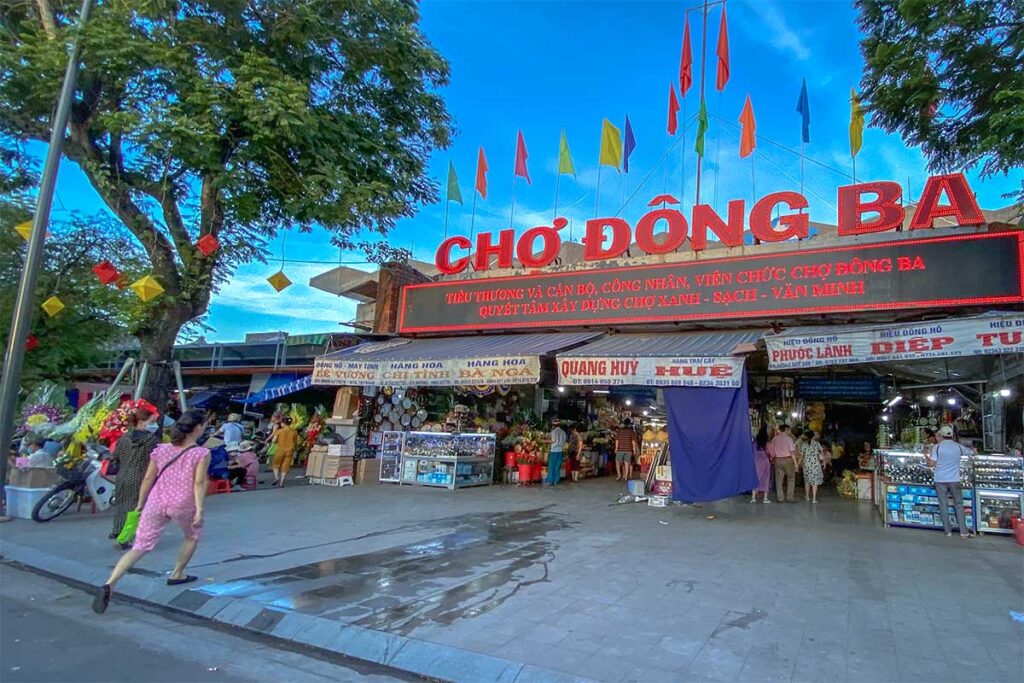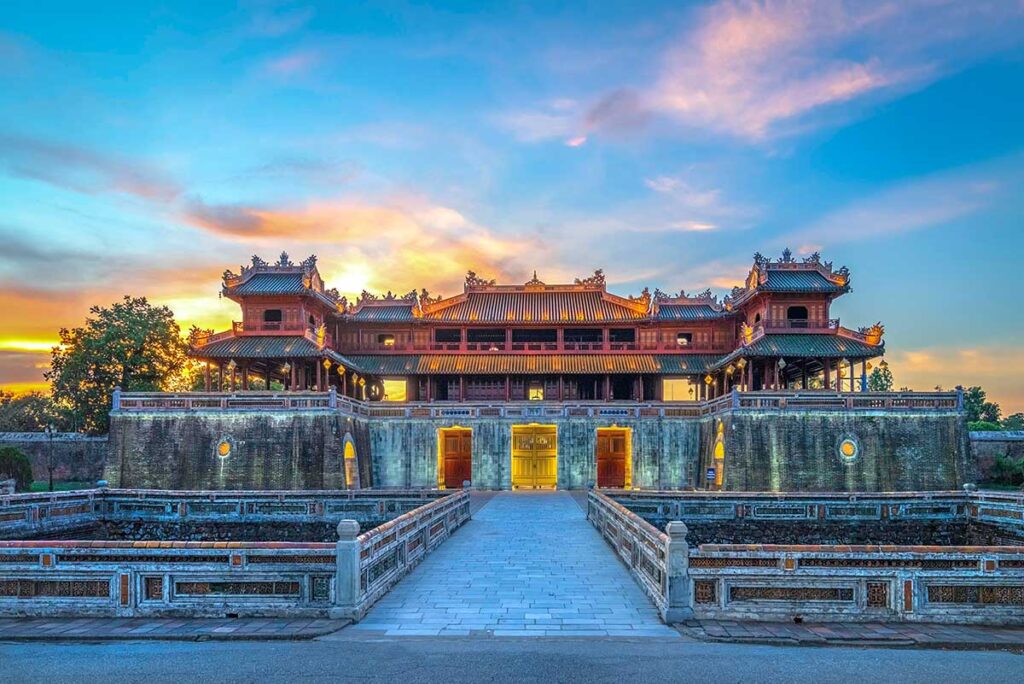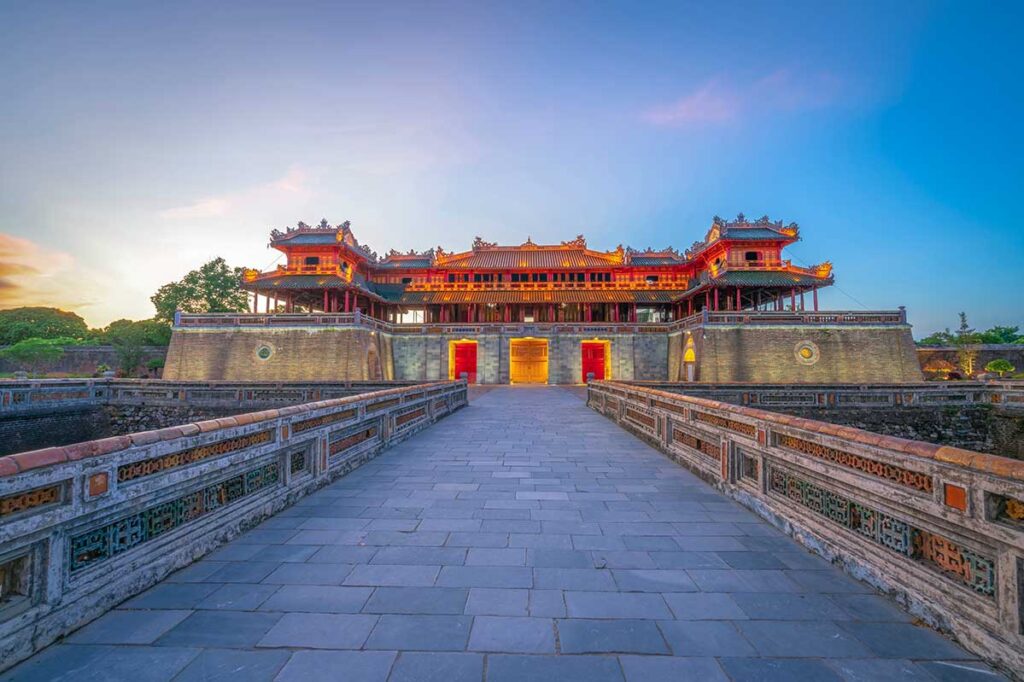What is Dong Ba Market?
Dong Ba Market is the largest and oldest traditional market in central Vietnam, and a key part of daily life in Hue. Located along the northern bank of the Perfume River, near the eastern gate of the Imperial City, this sprawling market covers several floors and dozens of aisles packed with everything from street food and spices to silk, hats, and household goods.
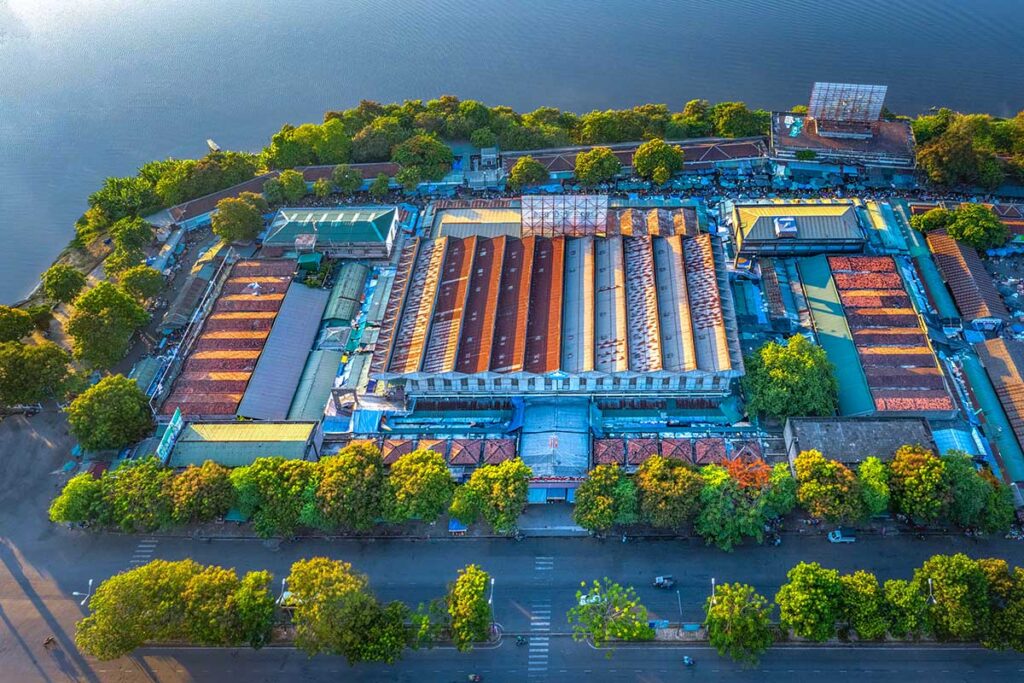
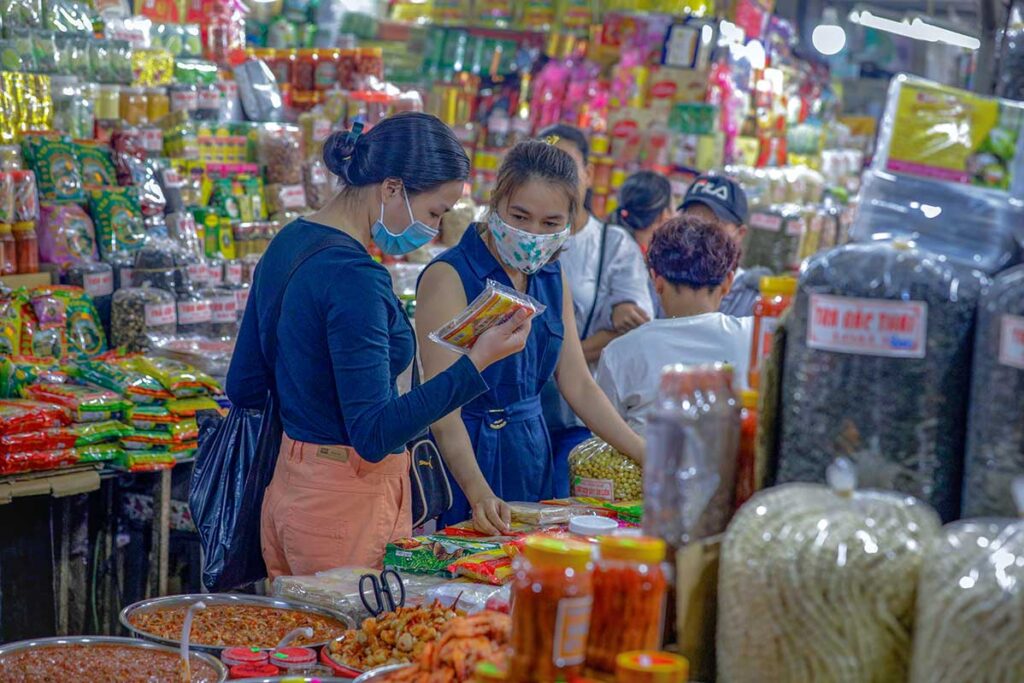
It’s a noisy, colorful, and often chaotic experience—but that’s part of the charm. Locals come here to do their daily shopping, while travelers explore for local dishes, souvenirs, and a glimpse of real Vietnamese market life. Whether you’re bargain hunting or just people-watching, Dong Ba is one of the best places in Hue to experience the local rhythm of the city.
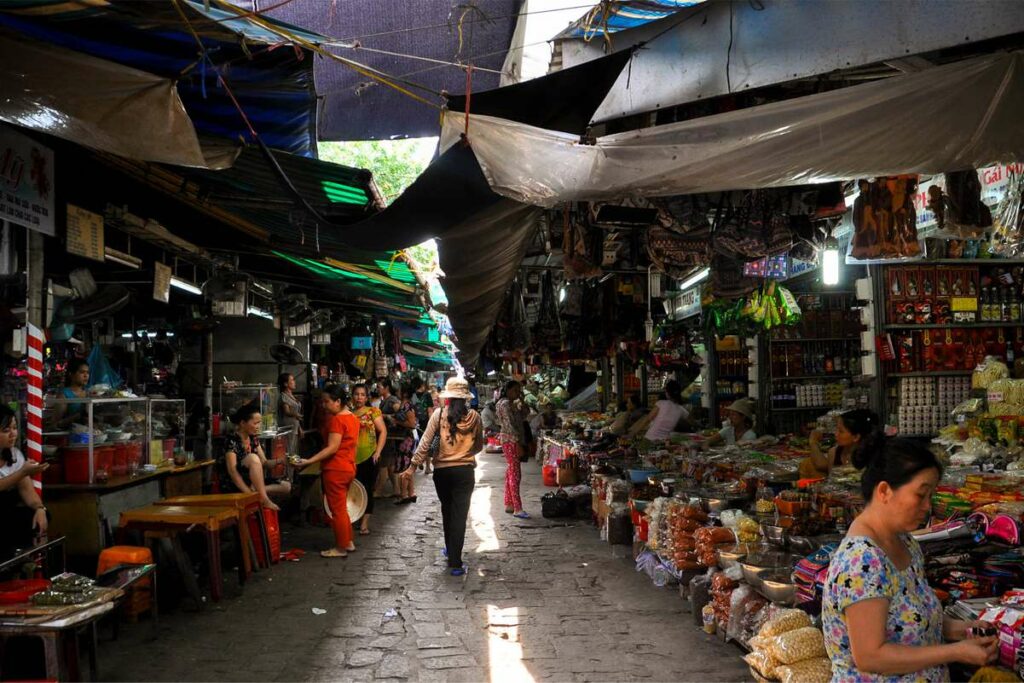
Tip: Join our small-group tour that combines Dong Ba Market with Hue’s top historical landmarks in one day:
Hue Historical City Tour
- Highlights: Hue Imperial City, royal tombs, Perfume River cruise, Dong Ba Market.
- Options: Small-group tour or private tour
History of Dong Ba Market
Dong Ba Market traces its origins to the early 1800s during the reign of Emperor Gia Long, when it was first established just outside Chanh Dong Gate under the name Qui Gia Thi, meaning “Return to the Homeland Market.” It served as a bustling trade center for the growing imperial capital of Hue.
In 1885, the market was destroyed during the Battle of Hue, when French colonial forces attacked the city. Two years later, in 1887, Emperor Dong Khanh rebuilt the market and officially gave it the name Dong Ba.
Then in 1899, under Emperor Thanh Thai, the market was relocated to its current riverside location and became even more central to daily life in Hue. Over time, it developed into a major hub for local trade, supplying goods not only to citizens, but also to royal households, hospitals, military camps, and national universities.
In 1987, a large-scale renovation project expanded Dong Ba’s structure to over 15,000 square meters, adding multi-level buildings, a bell tower, and new covered stalls. Despite these changes, the market has retained its original spirit—a place where tradition, trade, and daily life still meet under one roof.
What to see inside Dong Ba Market
Dong Ba Market is spread across three floors, with over 2,700 stalls selling everything from street food and spices to fabrics and household goods. While the market is popular with locals doing their daily shopping, there’s plenty for curious travelers to explore—especially if you’re interested in Hue specialties, handmade crafts, and a slice of real daily life. Here’s how the market is structured and what you’ll find on each level.
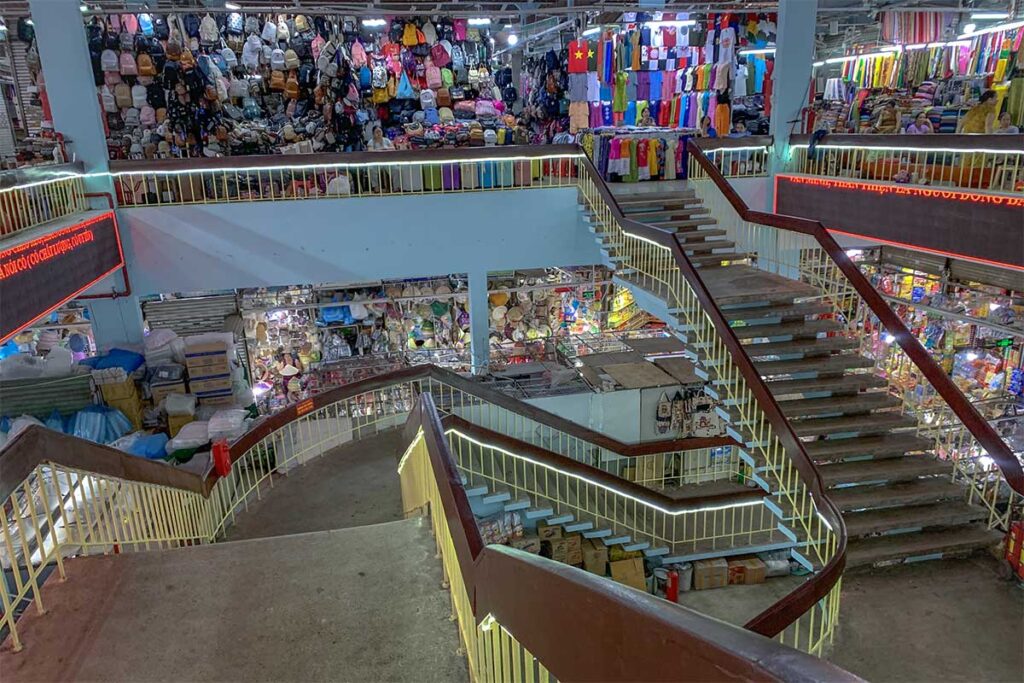
Ground Floor – Food stalls, snacks & local specialties
This is the liveliest part of the market, where the air is filled with the smell of grilling meat, fermented sauces, and fresh herbs. Most of the food stalls are located here, selling a wide range of local dishes like:
- Bún bò Huế (Hue beef noodle soup)
- Cơm hến (clam rice)
- Chè Huế (Hue-style sweet soups)
- Grilled pork skewers and spring rolls
You’ll also find stacks of Hue’s famous fermented shrimp paste, anchovy sauce, and various dried snacks—great for taking home or munching as you explore. Sellers are usually happy to offer free tastings, especially for fish sauce or dried fruit.

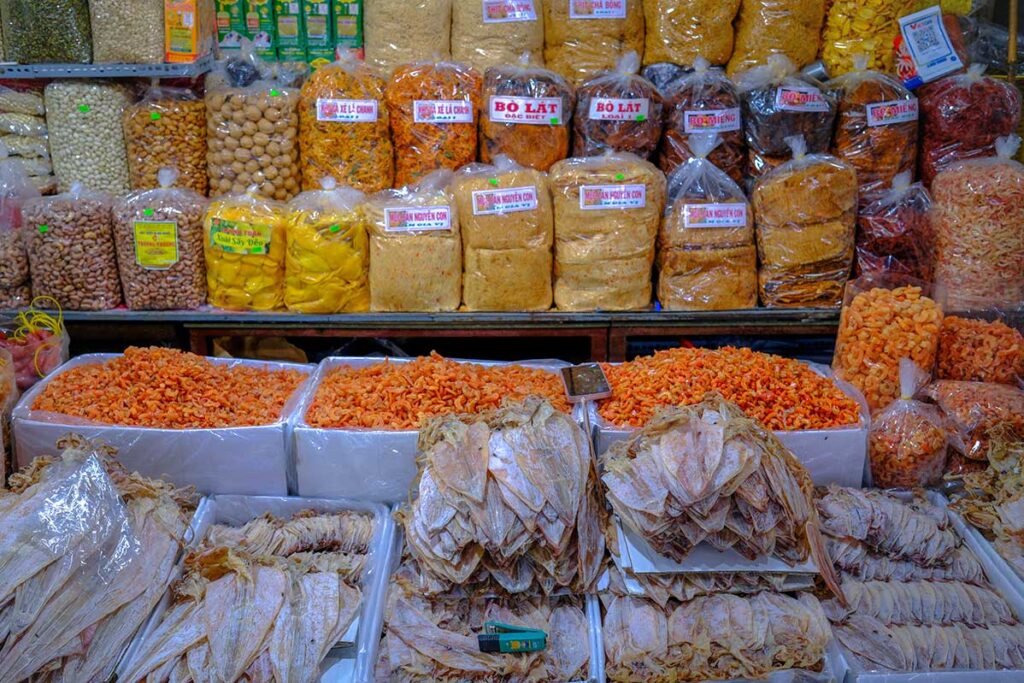
Second Floor – Handicrafts and gifts
Upstairs, things get quieter. This level is dedicated mostly to handmade goods, including:
- Conical hats (nón lá) from Phu Cam village
- Jewelry and silverware from Ke Mon village
- Bamboo products, from trays to baskets
- Ceramics and traditional cookware
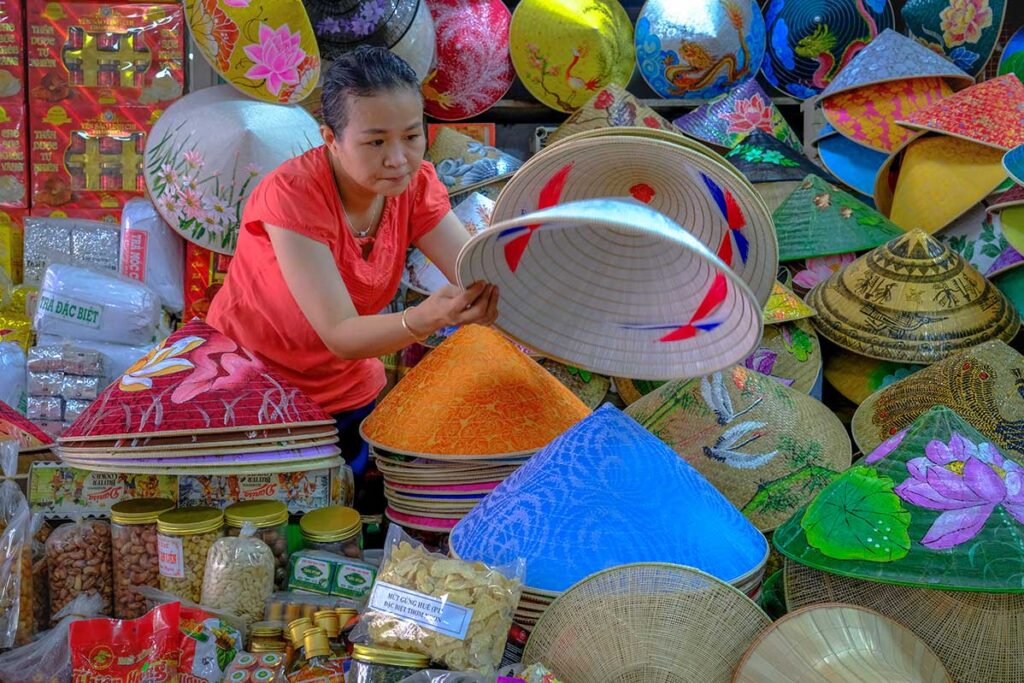
Many of these items come from Hue’s surrounding craft villages, and while some stalls are tourist-focused, others sell more authentic, locally made goods. It’s a good spot to browse for gifts, especially if you’re looking for something lightweight and easy to pack.
Third Floor – Fabrics and traditional clothing
The top floor is where you’ll find rolls of fabric, scarves, and clothing, including materials for tailoring a custom ao dai (Vietnam’s traditional dress). There are both modern and classic designs available, and if you’re interested in having an ao dai made, some stalls can recommend tailors nearby.
You’ll also find casual wear, sleepwear, and everyday clothes that locals shop for—great if you’re looking for something light, inexpensive, or uniquely Vietnamese to wear while traveling.
Outside the Market – Street food & daily essentials
Just outside the main building, vendors set up stalls selling fresh fruit, vegetables, flowers, suitcases, electronics, and more. This area feels more like a typical Vietnamese street market and is a good place to grab a quick snack or wander among the locals.
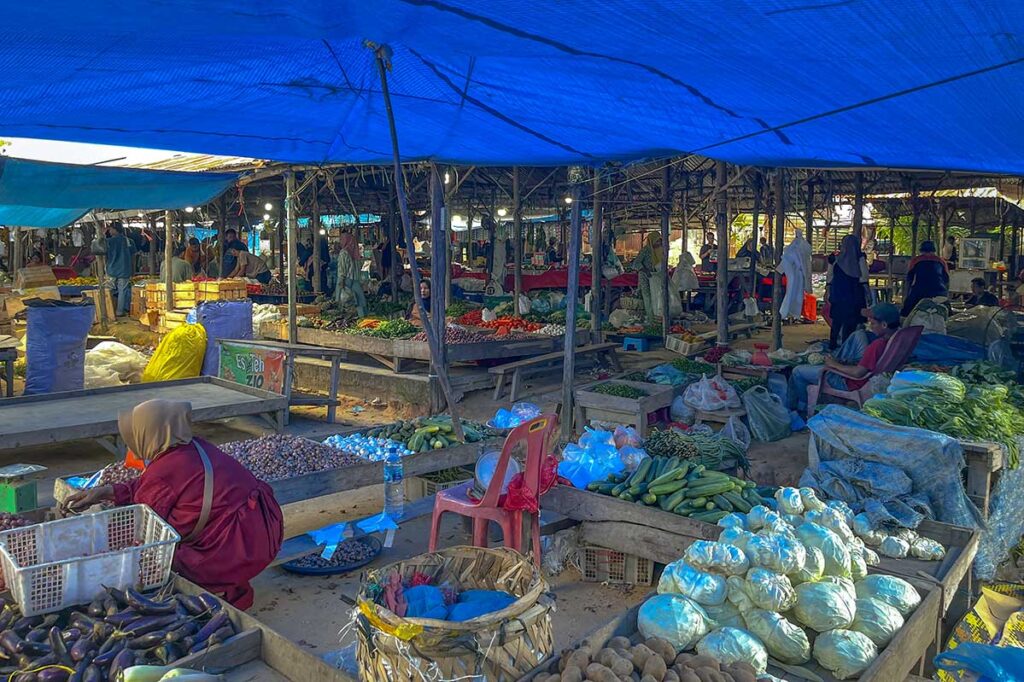
Tips for shopping at Dong Ba Market
Dong Ba isn’t a typical tourist market—it’s a true local market where most stalls serve everyday shoppers, and only part of it is geared toward souvenirs. Still, there’s plenty for travelers to explore. Here are some realistic tips on what’s actually worth buying, how to handle bargaining, and what to expect when shopping in Hue’s busiest market.
What to buy as a traveler
If you’re looking for meaningful or easy-to-carry souvenirs, focus on these:
- Conical hats (nón lá) – Light, affordable, and iconic. Some even have hand-painted scenes from Hue.
- Bamboo and rattan goods – Baskets, trays, and placemats are lightweight and often handmade.
- Ceramics – Small bowls or incense holders with traditional designs make great gifts.
- Dried snacks – Dried jackfruit, lotus seeds, or banana chips are easy to pack and taste great.
- Fish sauce or shrimp paste – These are Hue specialties, but be careful with packing. Opt for sealed, leak-proof bottles labeled for export if you’re flying.
- Herbal teas or royal tea blends – Nicely packaged and easy to take home.
- Silk scarves or ao dai fabrics – Great for gifts or for tailoring if you’re staying in Vietnam longer.
Skip things like fresh produce, flowers, or raw seafood—they’re great for photos, but not for your suitcase.
How to bargain without stress
Prices in Dong Ba Market are usually not fixed, especially for souvenirs, clothes, and non-food items.
- Start by offering 60–70% of the quoted price if you’re shopping for souvenirs or clothes.
- Be friendly and smile—bargaining is more about tone than pressure.
- Don’t haggle too hard—you might save a dollar, but it’s often not worth the hassle.
- If the vendor doesn’t budge or seems annoyed, you can politely walk away—often they’ll call you back with a better price.
For food or essentials, prices are usually low already, and bargaining is not expected or necessary.
Other useful tips
- Bring cash: VND is the only way to pay. Big notes (like 500,000 VND) may not be accepted at small stalls.
- Check packaging: For food items, make sure anything edible is sealed and clearly labeled if you plan to bring it home.
- Go in the morning if you want more selection and less crowding. Afternoons can be busy and hot.
- Be respectful: Avoid aggressive bargaining, especially for handmade items. Many sellers are craftspeople or small traders, not tourist vendors.
Visiting Dong Ba Market
Location
Dong Ba Market is located at 2 Tran Hung Dao Street, right along the northern bank of the Perfume River, between Trang Tien Bridge and Gia Hoi Bridge. It’s just east of the Imperial City, making it easy to combine with a visit there.
Opening times
The market is open daily from around 6:00 AM to 6:00 PM. Mornings are the busiest, especially between 7:00 and 10:00 AM, when locals shop for fresh produce and breakfast.
Best time to visit
If you want to see the market at its liveliest, come in the early morning—you’ll find local shoppers, food vendors setting up, and a great atmosphere. For a more relaxed experience, mid-morning to early afternoon is quieter, but some fresh food stalls may already be closed.
Wear closed shoes
The market isn’t dirty, but the ground floors can be wet or slippery, especially around the fresh fish and meat sections. It’s best to wear closed shoes rather than sandals to avoid stepping in puddles.
Skip the meat section (If sensitive)
If you’re squeamish, skip the meat and fish section on the ground floor. While it’s part of the authentic experience, it may be uncomfortable for some travelers.
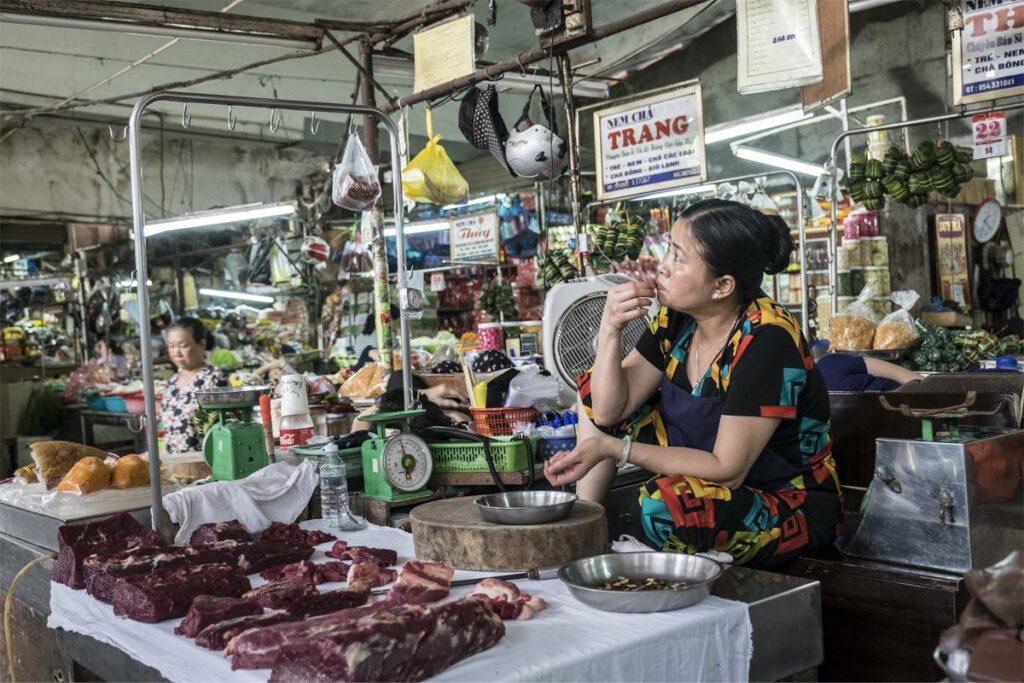
Already bargaining tips?
For advice on haggling, see the previous section on shopping tips. Prices vary by item and vendor, and not everything is open to negotiation.
How to get to Dong Ba Market
Taxi or Ride-Hailing App
Dong Ba Market is in the city center, so a taxi or Grab ride from most hotels around the Perfume River or Imperial City will cost about 40,000 to 80,000 VND ($1.50–$3.00), depending on distance and time of day. Grab also offers motorbike taxis for solo travelers, which are usually cheaper and faster in traffic.
Cyclo
A cyclo is a traditional three-wheeled bicycle taxi—a fun and slow-paced way to get around. While often used for sightseeing tours, you can also take one for a short ride to the market. A ride from the city center should cost less than 100,000 VND—agree on the price before the ride to avoid surprises. It’s a great option if you want a local-feeling arrival.
Walking
If you’re staying near the Perfume River in the tourist-friendly area across the bridge (Le Loi Street or near Trang Tien Bridge), it’s a 10–20 minute walk to the market. Just cross the Trang Tien or Phu Xuan Bridge and follow the river.
If you’re visiting the Imperial City, the market is about 1.3 km from the west exit gate—an easy walk if the weather is nice. If not, you can grab a quick taxi, cyclo, or motorbike.
Cycling or scooter
Cycling is a great way to explore Hue, especially with its mostly flat terrain and light traffic. Many hotels offer bicycle rentals, and it’s a short, easy ride to Dong Ba Market. If you’re on a scooter, parking is available around the market, but expect small fees from local attendants.
